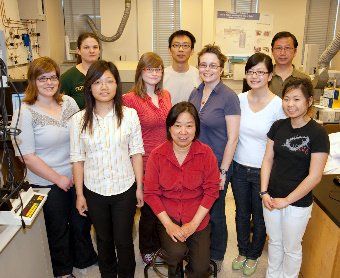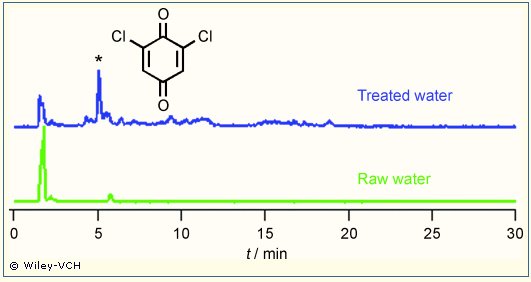Scientists in Canada have identified a toxic chlorination by-product of chlorination in tap water, dichloroquinone, using a newly developed procedure based on liquid chromatography (LC), electrospray ionization (ESI), and tandem mass spectrometry (tandem-MS). The levels of the compound may be present at a few nanograms per litre, which the researchers suggest may represent a bladder cancer risk as well as being associated with adverse reproductive effects.
Untreated water can carry several potentially lethal diseases, including typhoid, dysentery, cholera, and diarrhoea. Treatment and disinfection through chlorination usually renders water safe to drink and helps keep these illnesses at bay, at least in those parts of the world where chlorination facilities exist.
However, some scientists are concerned that the chlorination of water itself may be a risk factor for more insidious diseases. For instance, some studies have suggested that there may be a link between drinking chlorinated tap water and an increased risk of bladder cancer. Now, researchers at the University of Alberta, in Canada, have identified a chlorination by-product that may represent a risk factor, dichloroquinone.

Xing-Fang Li and colleagues explain that common reactions between chlorinating agents and natural organic molecules in water are known to produce tiny quantities of chloroform and chlorinated acetic acid derivatives. The presence of these compounds in drinking water are tightly regulated but the team suspected that there are other compounds formed in disinfected tap water that are not, among them chlorinated quinones. The researchers point out that concentrations of such compounds were below detection thresholds previously but are now under suspicion.
Quinones are organic molecules containing a six-membered carbon ring to which are attached two oxygen atoms bound by double bonds on opposite sides of the ring; microbial activity can lead to the presence of these compounds in water. Earlier, independent work suggests that halogenated quinones, those containing chlorine or bromine, can react with DNA and proteins even at very low concentrations and cause damage to these critical biomolecules. The Canadian team has now successfully identified a representative of this class of compounds, 2,6-dichloro-1,4-benzoquinone, in chlorinated drinking water.

“The scientific understanding of drinking-water quality has advanced substantially since trihalomethanes [e.g. chloroform] were first discovered [in water] in 1974,” the team says. “Effective management of disinfection by-products health risks requires better knowledge of disinfection chemistry combined with toxicology,” the researchers add.
LINKS
Angew Chem Int Edn, 2010, in press
http://dx.doi.org/10.1002/anie.200904934
I work on a water treatment works and this article was very interesting for me. My colleagues and i are familiar with trihalomethanes – there has been millions of pounds of investment over the last 10-15 years in our area – but i was not aware of the other potentially harmful components such as dichloroquinone. I wonder how this will impact us one the works – it does not sound as significant as trihalomethanes but would not be surprised if there was some action taken soon.